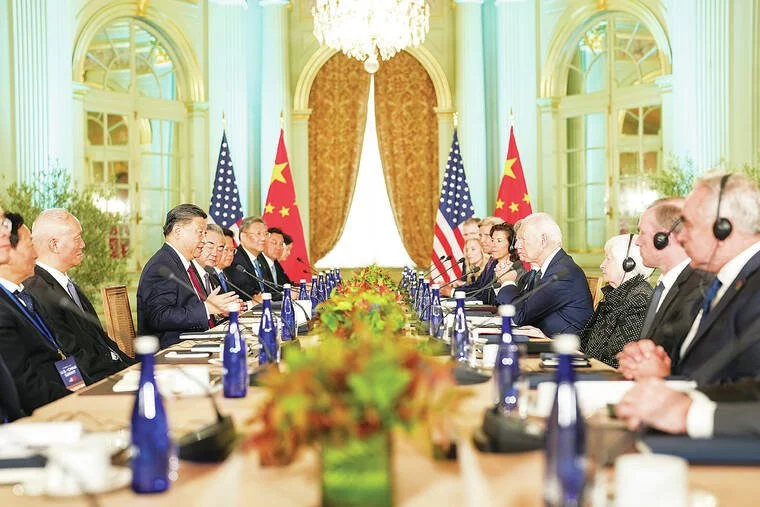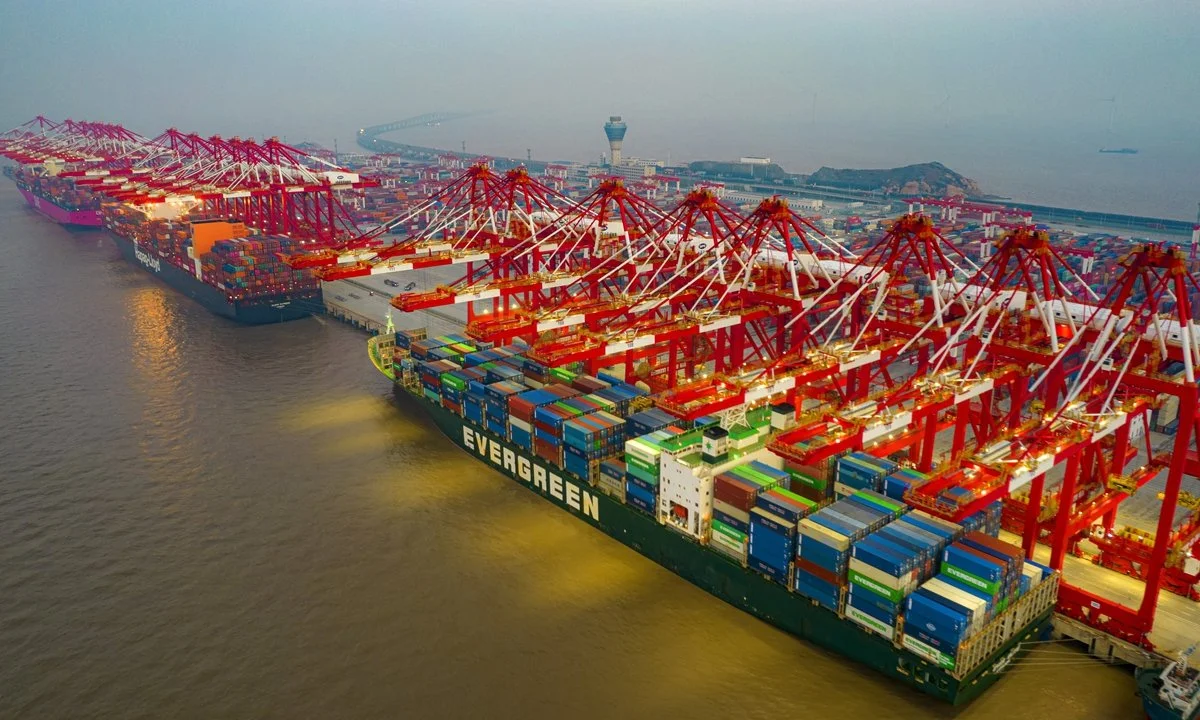China View: A Year After China’s Fentanyl Pledge, What’s Changed?
September 1st, 2024, Beijing, China
New regulations issued by the Chinese Communist Party (CCP) took effect, targeting the export of so-called "precursor" chemicals used in the production of illicit fentanyl. Prompted in part by pressure from the Biden administration, Beijing's move marked a critical step in confronting the increasingly deadly non-medical fentanyl trade. According to the U.S. Drug Enforcement Administration (DEA), China remains the dominant source, either directly or indirectly, of chemicals fueling the global fentanyl supply. At the time, limiting access to these key compounds was expected to disrupt black market supply chains and shrink the flow of fentanyl into the United States. After nearly one year in effect, how has the fentanyl trade changed and in what direction is it heading?
Joe biden and his cabinet met with XI Jingping at the Filoli Estate in Woodside, CA in November, 2023 to discuss fentanyl ahead of the APEC conference in San francisco
N-phenylpiperidin-4-amine, 1-N-Boc-4-(Phenylamino) piperidine, Norfentanyl, Cannabidiol (CBD), BMK glycidic acid, PMK glycidic acid esters, and 3-oxo-2-phenylbutanoic acid were the seven chemicals that the Chinese Ministry of Public Security were tasked with regulating the production of. Through targeting private pharmaceutical companies, state-sponsored pharmaceutical companies, and more unidentified production sites, the Ministry of Public security was supposed to implement checkpoints at every step of the precursor chemical supply chain to ensure that the only means of these chemicals exiting China and entering the U.S. was for them to be shipped knowingly, through legal ports of entry and to legal healthcare providers in the U.S. that administer and prescribe fentanyl in necessary cases. The regulations also required companies to implement stricter compliance measures and obtain licenses and permits to produce the precursor chemicals.
The fentanyl crisis in the United States warrants serious action. It is an epidemic that has increasingly ravaged communities year after year, affecting the wealthy and the poor, the young and the old, urban centers and rural towns alike. Pressure from activist groups, families, local lawmakers, and others is a key reason the Biden administration has urged Xi Jinping and the Chinese Communist Party (CCP) to act and to act quickly.
According to a report from the Select Committee on the Strategic Competition Between the United States and the Chinese Communist Party, titled The CCP’s Role in the Fentanyl Crisis, fentanyl kills over 200 Americans every day on average. It is now the leading cause of death for Americans aged 18 to 45. An estimated 2.6 million American children are being raised by someone other than their parents due to fentanyl-related addiction.
The economic toll is staggering. In 2020 alone, the fentanyl epidemic was estimated to cost the United States 7 percent of its gross domestic product, roughly $1.5 trillion. Addiction drives unemployment, which reduces consumer spending and limits the flow of money through the economy. Less consumer activity and high unemployment means fewer taxable exchanges, ultimately cutting into government revenue and increasing government spending on social welfare programs.
What makes the crisis even more damaging is that nearly all of the precursor chemicals used in fentanyl production are sourced from abroad, primarily from China. This means that while the United States absorbs the devastating human and economic consequences of the fentanyl epidemic, its chief global competitor stands to benefit financially from both its production and distribution.
It is estimated that 97% of illegal fentanyl found in the U.S. can be traced back to Chinese companies—one of the key reasons the Biden administration was eager to strike a deal with the Chinese Communist Party (CCP). For many of the illicit precursor chemicals used in fentanyl production, there is no known legal use in China, the United States, or virtually anywhere else around the globe. While many of these substances are, and have been, illegal in China for years, there has been little to no enforcement of laws regulating the production of these chemicals by Chinese companies. There is also scant evidence that the CCP has made any real effort to deter such companies from continuing production. In addition, the CCP has shown minimal commitment to monitoring exports to the United States and has done even less to prosecute known drug traffickers—many of whom are Chinese nationals—despite being presented with evidence by foreign governments.
China’s primary concern is not the drug-related issues affecting the U.S., the E.U., or other major markets for illegal fentanyl. Instead, their main focus lies in protecting their domestic economy. Halting the export of precursor chemicals and imposing fines and restrictions on companies attempting to do so would risk harming the Chinese economy while potentially benefiting their geopolitical adversaries. These factors, in part, help explain why the CCP was so hesitant to act on restricting precursor chemicals.
China’s ports, the first leg of the fentanyl supply chain, often face little regulation. Above is the port of Yangshan
However, with sustained pressure and persistence from the Biden administration, the Chinese Communist Party ultimately agreed to crack down on the outflow of precursor chemicals. While it's difficult to determine the full extent of these restrictions' impact on fentanyl use in the United States, data from the CDC shows that from September 2024 to January 2025, overall drug-related deaths dropped by approximately 13,000 per month. Deaths specifically linked to synthetic opioids like fentanyl declined by 10,000 per month during the same period. Since September 1, 2024, overall drug-related deaths have decreased in every state except three: Utah, Nevada, and South Dakota.
While it may still be too early to determine whether Chinese restrictions are being effectively enforced—or even working—the efforts made by the Biden administration represent a step in the right direction, and a much-needed one in the ongoing fight against fentanyl.



